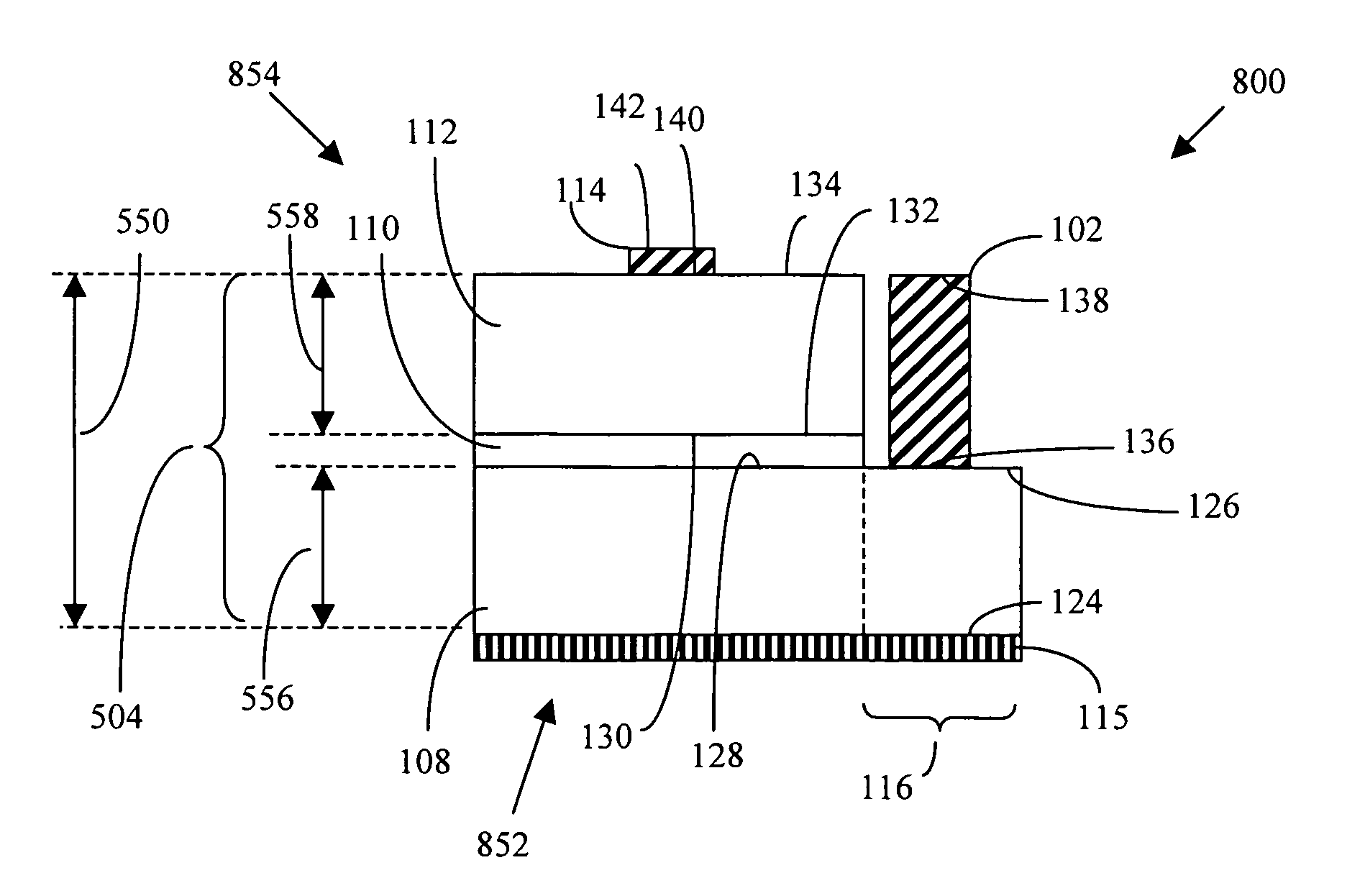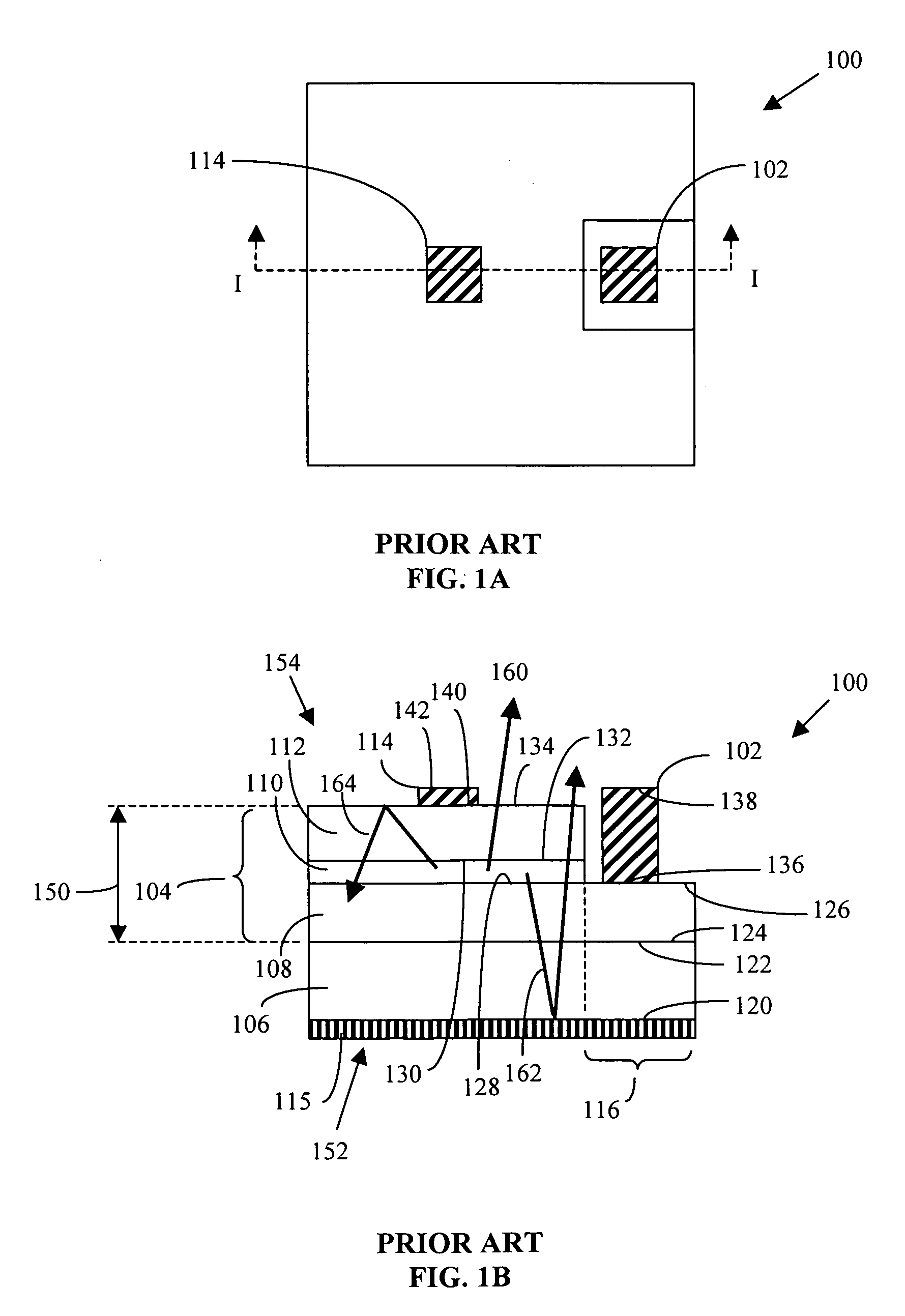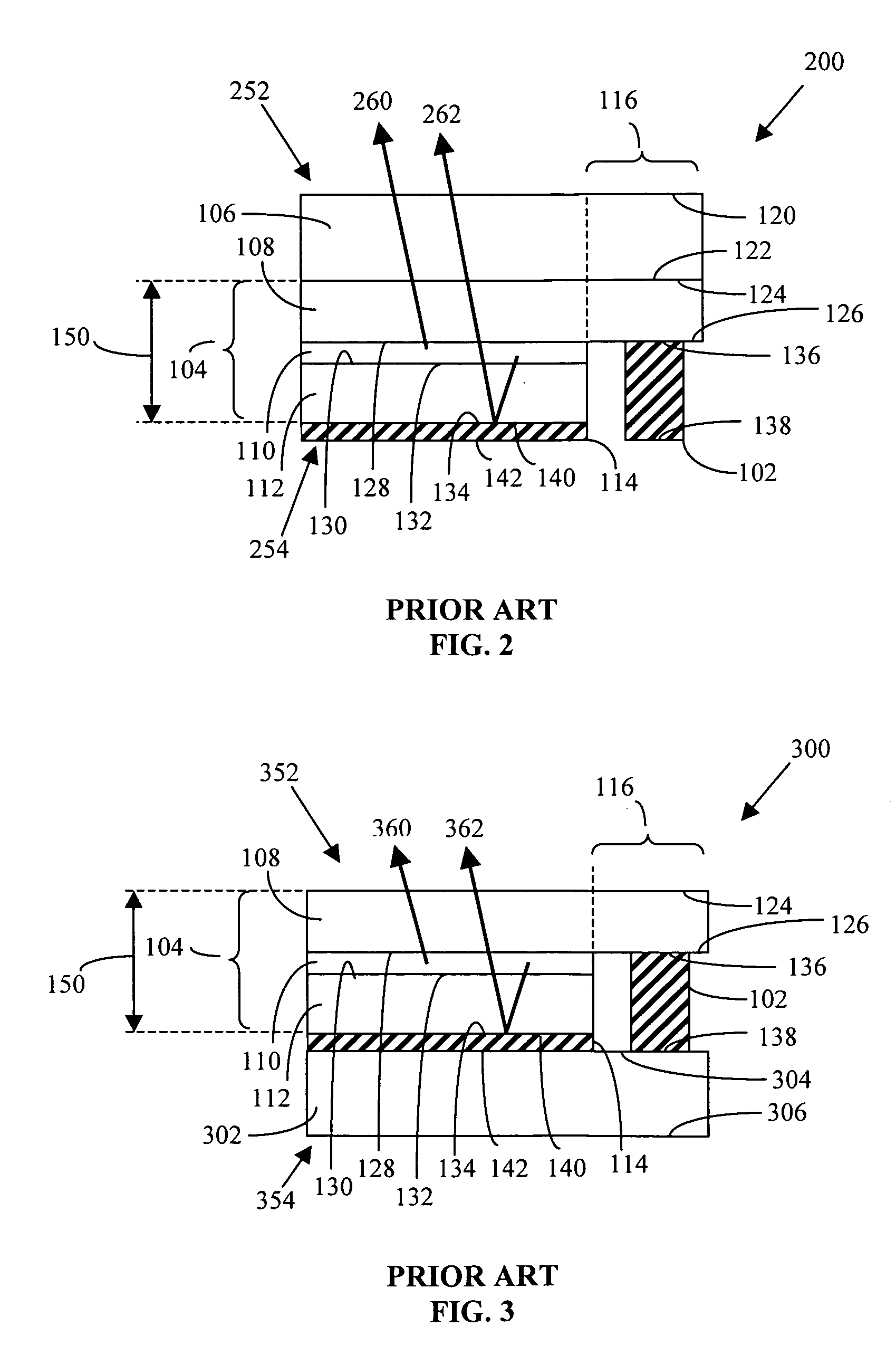In addition, the standard combined LED /
phosphor package is bulky and is deficient in many ways.
This results in deposition times of tens of hours and makes the growth of thicker
layers prohibitively expensive.
The approximately 3-micron thick multilayer
semiconductor structure is very fragile and will break easily if removed from the growth substrate to form a free-standing die.
The
wafer bonding techniques are expensive and can be unreliable.
The added steps increase the cost of manufacturing LEDs.
Such growth or transfer substrates may not suitable for the final LED device.
For example,
sapphire is a poor thermal conductor and is therefore not the most effective thermal conductor to direct heat away from the
semiconductor layers.
The heat lowers the light output and operating lifetime of the LED.
As LED sizes become larger, such heating effects become more important and can seriously degrade the light-output performance and lifetime of the LEDs.
In addition, the growth or transfer substrate may absorb some of the light emitted by the LED, thereby lowering the optical output.
The substrate may also trap some of the light generated by the LED, resulting in an additional loss in optical output.
Different growth techniques will be required to make such a structure since MOCVD is too slow to fabricate thick multi-layer semiconductor structures.
Though relatively inexpensive, the phosphors generated using these methods suffer from high levels of dislocations and
lattice defects.
In addition, the compositional purity is also difficult to maintain.
It has been shown in
accelerated aging studies, however, that very high excitation levels can degrade the output
luminescence of powdered phosphors severely and
impact overall life performance.
Several material characteristics such as
lattice defects, out-gassing, and compositional purity contribute to the problems of light output degradation and / or loss in efficiency for
phosphor materials.
In the case of powdered phosphors, this can be a major issue because the
phosphor particles are usually isolated from any reasonable
thermal conduction path.
At very high excitation levels, the energy associated with less than unity
quantum efficiency and
Stokes shift losses can induce a significant localized thermal rise within the phosphor particles.
Also, the scattering created by the use of a
powder can reduce the overall light output due to the backscattering and subsequent absorption of the generated light.
However, as-deposited thin film phosphors have relatively poor wavelength conversion efficiency.
This annealing step can damage the semiconductor
layers of the LED.
In addition, the absorption cross-sections of most thin film phosphors are low, especially for blue and
near ultraviolet (UV) excitations typically used for solid-state lighting.
It is neither economical nor practical in most cases to create a sufficiently thick layer of
luminescent material grown directly on the LED.
Another drawback to depositing a phosphor directly on the LED die is that a large portion of the light generated within a deposited phosphor layer can be trapped due to total internal reflectance.
However, single-
crystal phosphor substrates are expensive and finding a
single crystal phosphor substrate that has the proper lattice match to allow the growth of the LED structure can be difficult.
Single crystal phosphor sheets are therefore too expensive for most practical applications.
This cannot be done with most types of LED devices since the wavelength conversion chip would cover up one or both of the LED electrodes and prevent attachment of electrical connections to the LED.
A conventional LED
package containing an LED and a wavelength-converting phosphor is bulky compared to the light emitting epitaxial
layered structure itself.
U.S. Patent Publication No. 20050269582 does not disclose LEDs that have neither a growth substrate nor a transfer substrate as an element of the LED die.
In addition, U.S. Patent Publication No. 20050269582 does not disclose wavelength conversion chips that include an electrical
interconnection means.
U.S. Patent Publication No. 20050269582 also does not disclose a stack of light emitting chips where one chip is an LED chip and another chip is a wavelength conversion chip that includes an electrical interconnection means.
Although useful for light sources requiring a small emitting area or etendue, this type of light source has two deficiencies for general lighting applications such as room lighting.
One deficiency is that the high output intensity from such a concentrated source can exceed
eye safety standards and can be a safety
hazard.
A conventional high powered LED typically operates at
high current density, for example 1-2 amperes per
square millimeter of LED area, resulting in lower external
quantum efficiency than would be the case if the LED were operating at lower currents.
Using a single LED die operating at
high current density instead of several smaller LEDs operating a low
current density is usually dictated by the high cost of packaging multiple LED die.
An additional problem with high powered light sources is that a single, high-powered LED die or a closely spaced array of LED die can produce a significant amount of heat that must be dissipated quickly to prevent the die from overheating.
 Login to View More
Login to View More  Login to View More
Login to View More 


